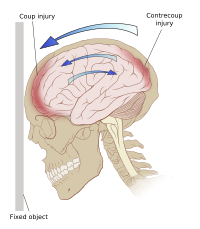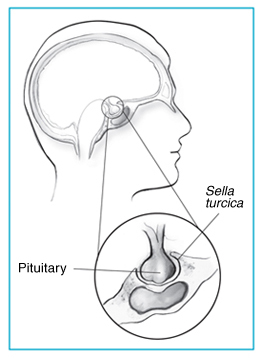Sept 20-21, 2018 I attended the Texas Bar CLE (continuing legal education) course held in San Antonio, Texas. They put a course on this topic on each year, at different locations around the state, and I’ve attended the past few years. They always have top tier national speakers covering recent content. By attending I picked up another 12 hours of professional development.
Professional Development
Instructors that are serious about excellence seek out professional development (training from others) every year, whether they are required to by a state licensing board or not. Texas requires License To Carry instructors to attend a 1 day training session put on by the state police and reshoot the qualification course of fire (scored by another certified instructor) every 2 years. That’s a higher requirement than most states have, but the quality of the biannual refresher training provided to LTC instructors has plummeted from the high standards set in the early years of the program. The content of the Texas Bar course is much closer to the level and depth of content the state police should be providing to LTC instructors.
You don’t have to be a lawyer to attend. A handful of firearms trainers attended, along with a mix of law enforcement agents, judges and lawyers.
The course comes with a detailed briefing book with long articles written by each presenter, and it’s possible to buy the class notes even if you don’t attend. Check the Texas Bar CLE website or contact them for details.
I am not a lawyer and these summaries should not be considered legal advice.
Part 2 of the quick summaries of the presentations I heard, with key points:
Crossing the Cop
This session focused on knowledge useful for criminal defense attorneys when cross examining police officers. Here are key points the speaker made during his presentation. Some statements are controversial and represent his opinion on this topic.
- Police academies tell cops it’s OK to lie to people to get confessions.
- Cops are taught to write reports to support charges and convictions. This can often result in information that might be useful being omitted or downplayed
- Always investigate the officer’s work history (how many years at current dept, frequent moves to different agencies, what/when training was taken, internal affairs files, employment application.
- Investigate the officer’s social media posts, marriage/divorce records and other public information (some cops have criminal records)
- May need a subpeona to get unredacted employment and internal affairs files
- Always look for what is missing
- Question the officer about what was left out of the report
Clayton Cramer – FBI Statistics
Clayton Cramer discussed why the FBI’s justifiable homicide statistics are a misleading measure of defensive civilian gun use.
The FBI gathers data on justifiable homicide but does not track “justifiable aggravated assault” or lower uses of force. That means defensive gun uses that do not result in death are not tracked at all by the FBI. The FBI does not “classificy a killing as justifiable or excusable solely on claims of self-defense”. Many states limit the ruling of justifiable homicide to felony offenses. A lot of them don’t go into the FBI justifiable homicide data. They show up as murder or non-negligent manslaughter because of the initial police report. This understates justifiable homicides and overstates murders.
Cramer claimed that Civilian Legal Defensive Homicides are typically 7-13% of the annual murder rate. (Murder rate is a subset of the total gun death rate, which includes accidents and suicides. A rough estimate is that out of 10,000 murders annually, 700-1300 are justifiable — out of a national population of over 300 million.)
He cited a Time magazine story that looked at all gun deaths in the US in a single week. in 1989. 3% of those deaths were justifiable homicides. One year later, the total of justifiable homicides from that week had risen to 6%, with 43 cases still awaiting trial.
Bonus knowledge: back in 1974, the Texas Penal Code stated that homicide is justifiable before adultery, provided the killing takes place before the parties to the act have “separated”. (This statute had been removed from the deadly force laws by the time the Texas concealed handgun license began in 1995.)
Firearms in Family Law
Most of this presentation related to situations where a family member may have to give up his or her guns due to mental illness or criminal conviction. If NFA items are involved, transferring them to an FFL (with the appropriate grade of dealer’s license) was recommended as an alternative to giving them to the police to store. Active duty police are allowed to retain their duty guns when under protective family orders that would disarm ‘civilian’ armed citizens. In many jurisdictions, police that are the subject of a case cannot/should not bring their duty guns into the courtroom — that privilege no longer applies when the officer is a defendant.
Firearm Rights Restoration
The next session was on a related topic – the restoration of firearms ownership rights that may have been lost due to mental illness or criminal conviction. That requires the individual to have their record expunged, set aside, pardoned or some other form of civil rights restoration to occur. There are only 1-2 pardons per year in Texas, and the way Texas does it, restoration of firearms rights requires a separate hearing. Historically rights have not been restored unless it was required for the person’s employment. This session was presented by Joshua Prince, who has an excellent legal blog heavy on firearms rights content.
Resilience Training: Performance and Interpersonal Management Skills for a Better Practice, and a Better Life
This was presented by a judge. It was solid information about managing stress and anger in a career field that has many opportunities for emotional confrontation. The topic wasn’t specifically related to firearms law, but it was definitely applicable, and included because it counted toward the requirement that all CLE courses include some ethics or ethics-related training.
Top Ways Your Client is Violating State or Federal Gun Laws
In the order they were discussed, not ranked in order of most common violations:
1) Selling reloaded ammo without an ammo manufacturing license. (Generally a bad idea from a liability standpoint. Blow up someone’s gun, or worse, cause an injury, and your homeowner’s insurance or even instructor insurance isn’t going to cover you.)
2) Making or modifying guns to be a prohibited item – such as a short barreled rifle.
3) Possessing, growing, or using marijuana or other drugs illegal under Federal law. Even if they are legal in the state you are in.
4) Committed to a mental facility – makes you a prohibited person. Texas has NICS mental health reporting guidelines and more than likely being committed will prevent you from passing a background check (which also affects carry permit status).
5) Doing a private transfer (no FFL/no background check) to a person you know is prohibited from owning firearms.
6) A spouse or family member that isn’t on your NFA gun trust using that NFA item without you right there with them.
7) The Kubaton (popular self defense item) could be considered an illegal weapon in Texas similar to brass knuckles. Possession could be a class A misdemeanor which would result in loss of carry permit.
8) Loaded gun in your carry on bag at the airport. Texas airports are 3 of the top 10 for this error, nationally. (Worse, most of the guns don’t have a round chambered or even a loaded magazine in the gun. If you are going to carry, carry a gun you can actually use if you need it. And keep up with where your gun is…all the time. Have a locking box in your car, all the time, that you can use to lock up your carry gun when you need to enter a premises where it’s illegal to be armed…or if you find a gun in your carry on bag when you give it one more check in the parking lot of the airport.)
9) Posting evidence of your violations, or discussing acts that would be violations on social media.
10) Running or participating in an illegal gun raffle. There are people that will do gun raffles online – buy tickets and they give the gun away, often making a nice profit. That type of raffle is only legal when run by a very specific list of approved groups: religious societies, volunteer fire/EMS, non profits. Only two raffles can be run per year, not at the same time, with no paid advertising. Specific items must be printed on each ticket: the name of the organization, address, ticket price, date of award, and other information required by law. It’s not only a violation to run a illegal raffle, it’s a violation to participate in it by buying a ticket.
Witness Dynamics
Massad Ayoob wrapped up the event with a session covering Witness Dynamics. Unfortunately due to the long drive back to College Station, I had to leave early and missed Mas’ talk. Looking at the written handouts he provided to all attendees (limited distribution only to those who paid for the training course, sorry), he covered keys to impeaching adverse witnesses in self defense cases.
That includes witnesses that are deliberately lying, have been led, are sincere but mistaken, is a “confabulating” witness. One definition of confabulation is “a memory disturbance, defined as the production of fabricated, distorted or misinterpreted memories about oneself or the world, without the conscious intention to deceive.”
Each requires different approaches, including use of video/audio recordings, expert witnesses, or explanation as to how perceptions can be altered or corrupted during high intensity events.
To learn about that topic, Mas offers his MAG-20 classroom course and the longer Deadly Force Instructor class. I had the opportunity to be an expert witness in a 1st degree felony case (working for the defendant) earlier this year, and the issue of the reliability of witness memory was a factor in the defense. The training I got from Mas on this topic, particularly in the Deadly Force Instructor course, was very valuable.
SUMMARY
Any Texas License to Carry instructor serious about being informed and competent on legal issues should spend “their own dime and their own time” (as Tom Givens often puts it) to attend this course. The content goes far, far beyond the meager/minimal training that occurs in the biannual LTC instructor retraining sessions run by Texas DPS. The class isn’t cheap, but the topic of self defense and deadly force is serious business, and deserves serious study — particularly by those taking money from others who expect their instructor to be a true subject matter expert beyond the state minimum. The tuition for this event was roughly the same as the cost of attending a 2 day live fire class.
The event can be attended by carry permit holders and the general public. It moves around to different major cities each year. The next opportunity will be a video replay of the content from the session I attended, presented in Dallas in early November. Check the Texas Bar CLE website for details.






















































































